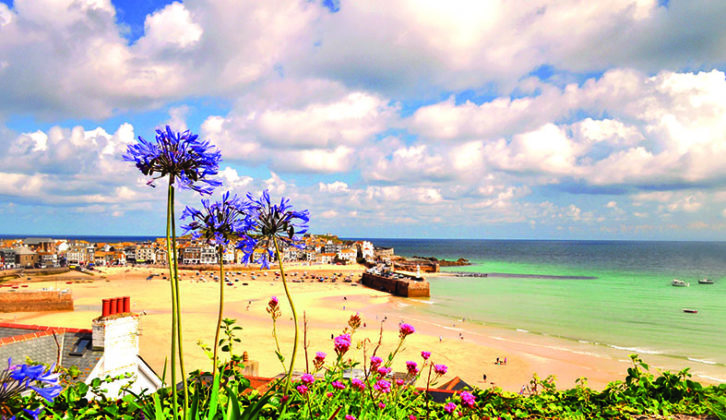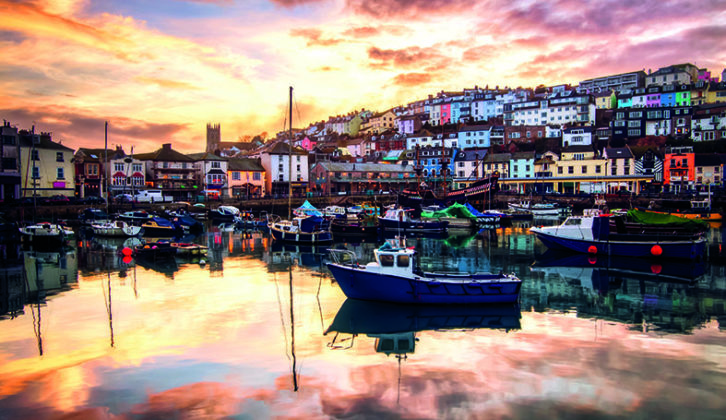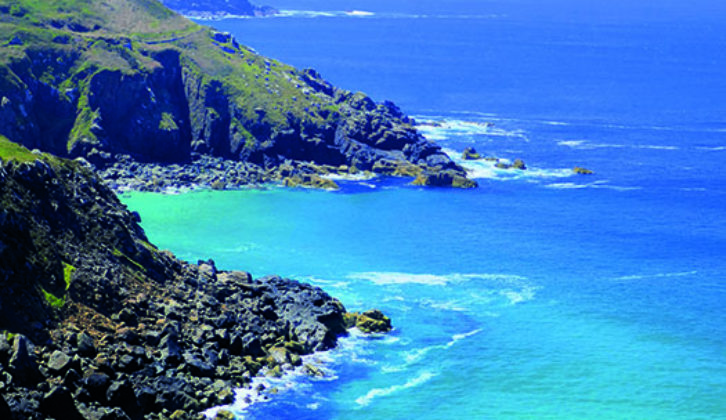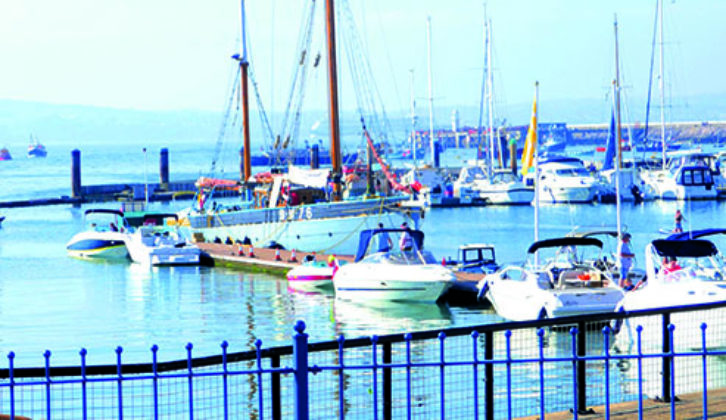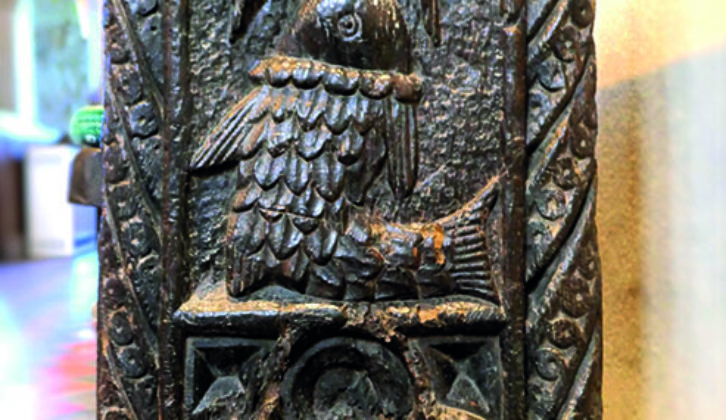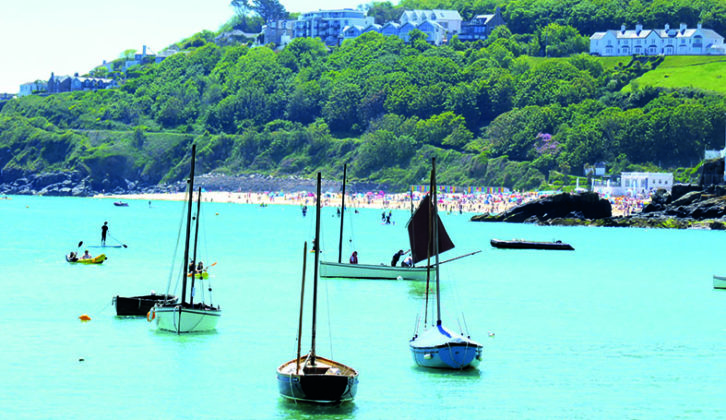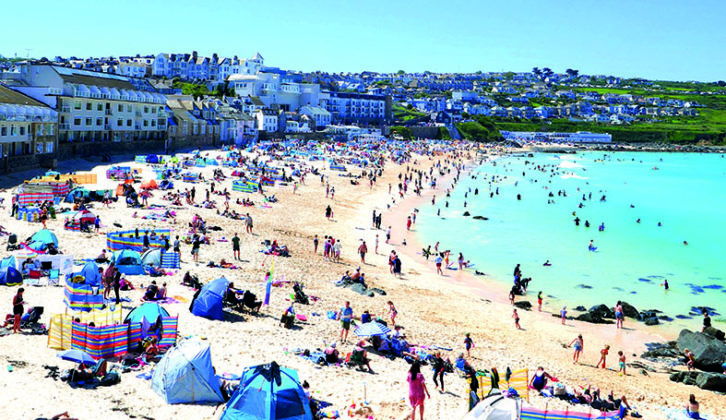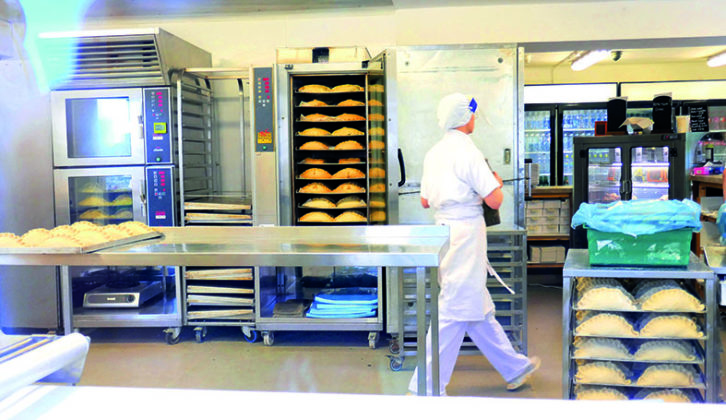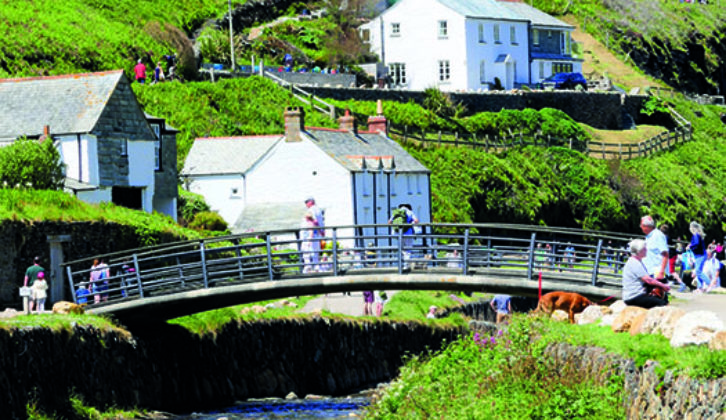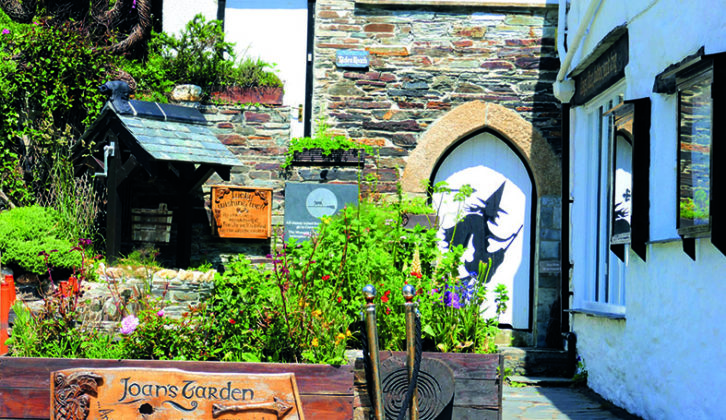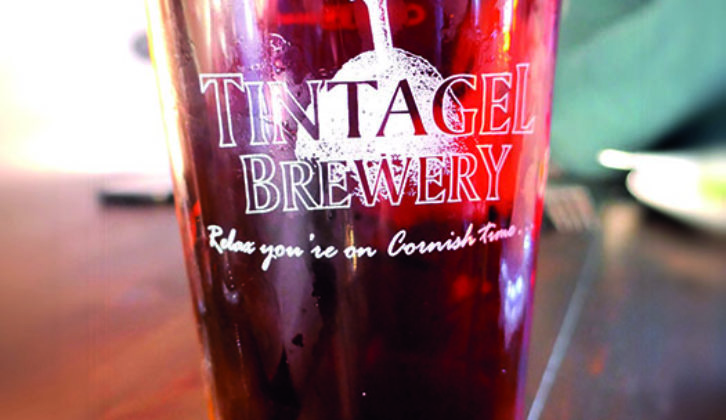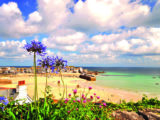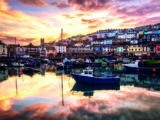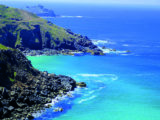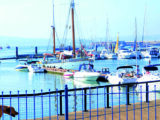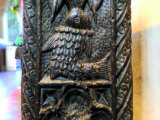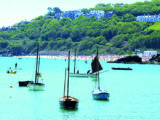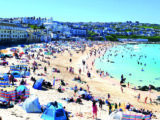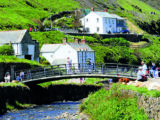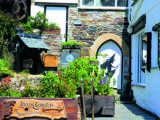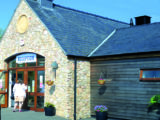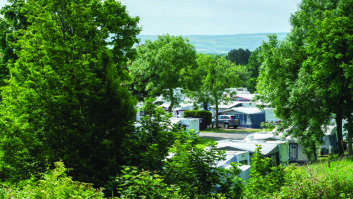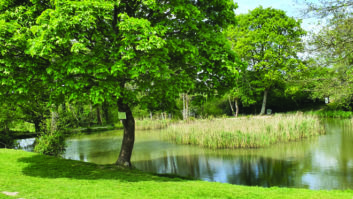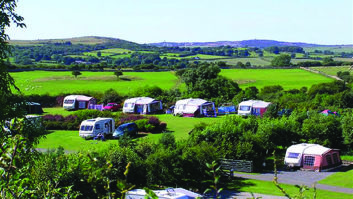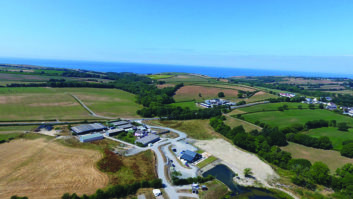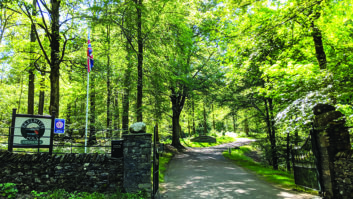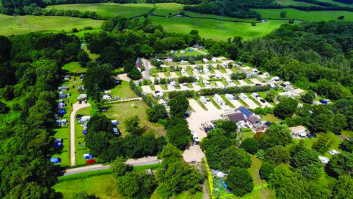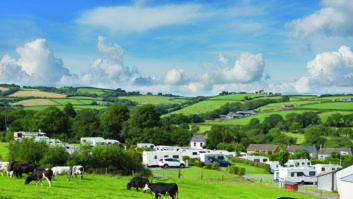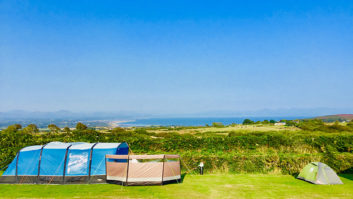Oil level? Check. Brake lights? Check Stocked fridge? Check. At last it was time to set off on our first longer trip of the year, which usually takes us to Brixham, on Devon’s English Riviera, to spend some time with old friends. This time, to add to the air of excitement at our departure, we were extending the tour and venturing further afield.
We had decided to leave behind our usual ‘far from the madding crowd’ kind of holiday and head out to the tourist hotspots of St Ives and Tintagel – so many visitors each year can’t be wrong! We thought it was high time to find out what draws them there.
Harbour views
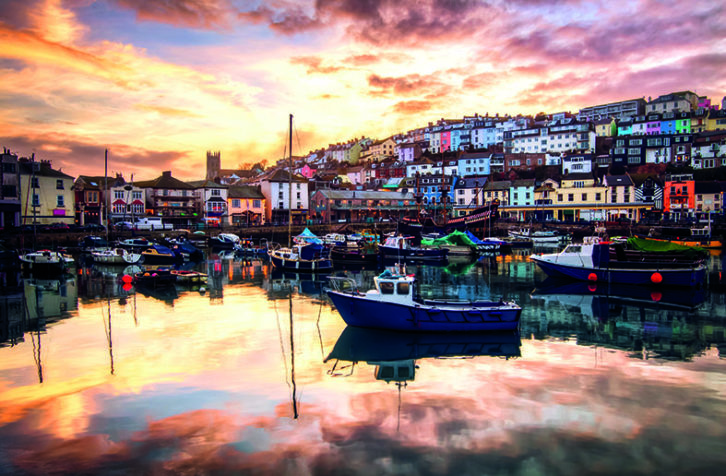
But first, a few days at the Wall Park & Centre Road Camping Site in Brixham. We have, over the years, tried all of the sites in the area and this one has the easiest route into town – very important when town is all uphill and down slope.
It is also easier to forget the strain on calf muscles as you descend when you have a lovely view of the harbour below beckoning you on, not to mention the promise of a pint at the harbourside Prince William pub, just half a mile from the site.
Suitably refreshed after our long journey from home, and happy to be out in the warmth at last, the next day was spent strolling around the shops, enjoying an ice cream on the beach and soaking up the atmosphere, before indulging in al fresco fish and chips. They tasted so good, fresh from the paper – although we had to keep a wary eye on the marauding seagulls!
We enjoyed catching up with our friends in the area, but it was soon time to head over the mo0rs and along the A30 to St Ives, a manageable two-and-a-half-hour drive.
Atlantic coastline
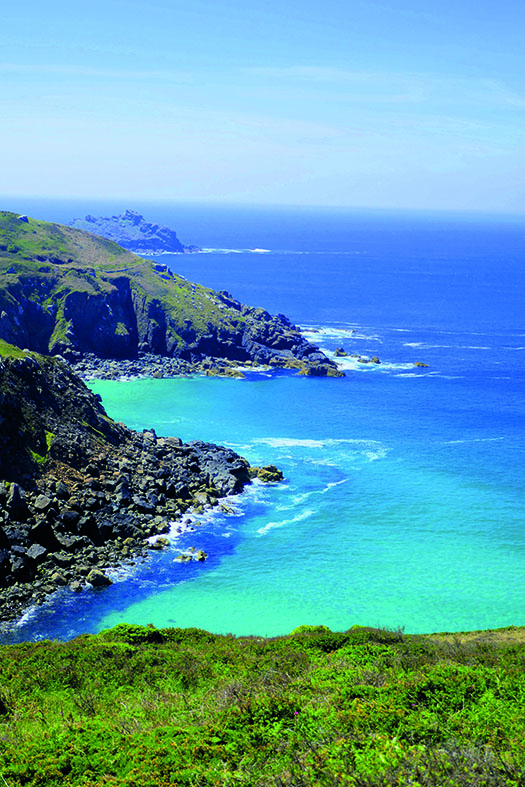
We were booked in to stay at Polmanter Touring Park, just outside St Ives. After a very efficient check-in, we were soon relaxing with a tasty lunch.
I was keen to discover more of Britain’s Atlantic coastline and scoured my map for inspiration. Just beyond St Ives sits Zennor, a pretty village on the spectacularly beautiful Zennor Head.
The village itself is a tight squeeze for cars, so if you visit, I suggest you do as we did and head straight to the car park. Then, our first stop was the church of St Senara, best known for its medieval carving of the Mermaid of Zennor.
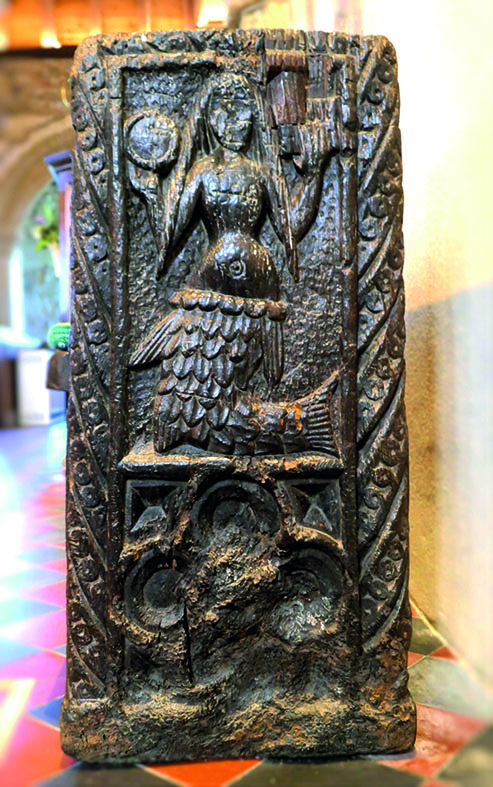
The story goes that a local lad, Matthew Trewella, was a member of the choir whose beautiful singing brought a mermaid named Morveren to the church to listen. She was so taken with him, she lured him out to sea – you know the rest: he was never seen again, but on a clear night, his voice can be heard singing beneath the waves.
To commemorate the tale and warn unwary young men, a depiction of Morveren was carved into one of the church pews, where it can still be seen today.
Zennor also has a literary history – DH Lawrence lived here for a while, until he was driven out under suspicion of being a German spy. He rightly described the area as “infinite Atlantic, all peacock mingled colours and the gorse is sunshine itself”.
We were primarily here for the views and so took the coastal path out through the moorland and onto the cliffside. I found the perfect spot to sit in the sunshine, listening to the ocean crashing below and the gulls screeching overhead, enjoying being surrounded by all that natural beauty for a little while.
Next morning, we walked into the town to discover what brings so many holidaymakers to St Ives and its beaches every year. From Polmanter, it is a pleasant half-hour stroll into town. A gradual descent all the way, of course, meant an uphill return – good job there was a bus from the centre of town to take us back to the campsite after a day of exploring!
Cobbled streets
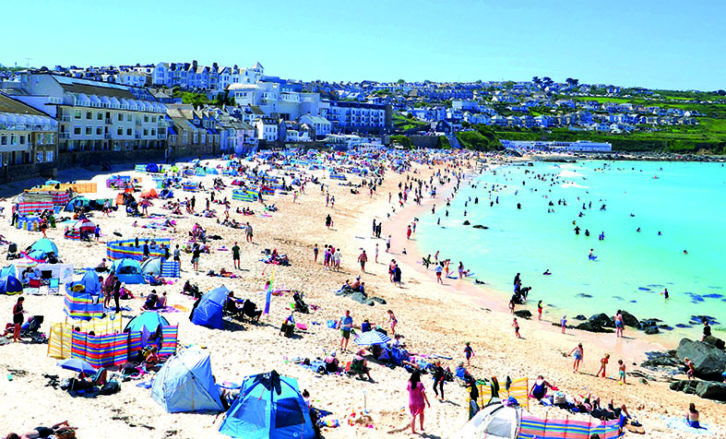
We found ourselves joining the throng wandering the shops and harbour, jostling for seats at the bars and cafés, and enjoying the sandy beaches.
I’m sure the cobbled streets with their (often quirky) gift shops and art galleries are lovely to browse when it isn’t the week after a bank holiday, half-term, and just after a national lockdown.
But for all the crowds and bustle, there was still a certain charm to this Cornish town, with its harbour and numerous beaches, and it is easy to understand its appeal. There is something for everyone here from the most energetic surfer to the family with toddlers, from the history buff to the pleasure-seeker.
During our wandering, we discovered a train station inviting us on a short but scenic journey around the bay. The following day we took up its offer, leaving St Ives for a while to visit the lesser-known village of St Erth, which promised an old church and even older pubs to explore. To be fair, there isn’t much else of interest here, but the fine scenery en route is worth the short journey – just make sure you sit on the right side of the train to enjoy it.
We alighted at Carbis Bay on the way back, to eat our picnic ;lunch on the beach before returning to the busy sands at St Ives. Having only recently emerged from lockdown and all that self-isolation, large crowds were a bit of a culture shock!
Carbis is a lovely spot, though, with golden sands and a sea just made for messing about in, especially on a warm sunny day, such as we were treated to.
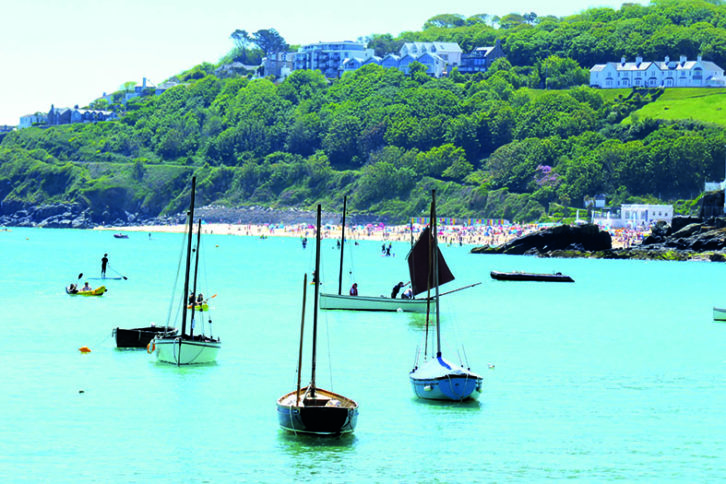
Back in St Ives, we had hoped to enjoy a pint at the town’s oldest pub, The Sloop Inn, dating from the early 1300s and a popular spot to sit and watch the world go by. While we were there, however, it seemed the world wanted to sit and not go by – no chance of a table!
Deciding not to attempt finding a restaurant that evening, we opted instead to eat at the campsite’s Stable Bar. It was quiz night and we had booked a table to take full advantat3e of the entertainment, managing to come joint second (we lost the tie-break, so officially we came third, but I’m sticking with joint second!).
With this small win still reverberating next morning, it was time to pack and head for our next destination.
Arthurian legend

The Headland Caravan Park at Tintagel is a simpler affair than Polmanter, barely more than a large grassy field with some hook-up points and a shower block beyond the static caravan at the wide entrance.
This suited us perfectly, especially as it was only a few steps away from the high street and the walk to that famous castle of Arthurian legend.
It was less busy here and we were able to wander the high street at leisure, stopping to admire the Old Post Office, and indulge in a local ale at the King Arthur’s Arms. As it was still half-term and Tintagel didn’t seem over endowed with restaurants, we phoned to book a meal for the following evening at the Tintagel Brewery, a few miles inland.
We checked the bus timetable for the following day’s visit to Boscastle (five miles away) before strolling back to the campsite to relax with grass between our toes and the sun on our faces. On our way to the bus next day, we stopped at a little pasty shop we had spied in Tintagel the day before – perfect for lunch later.
Magical appeal
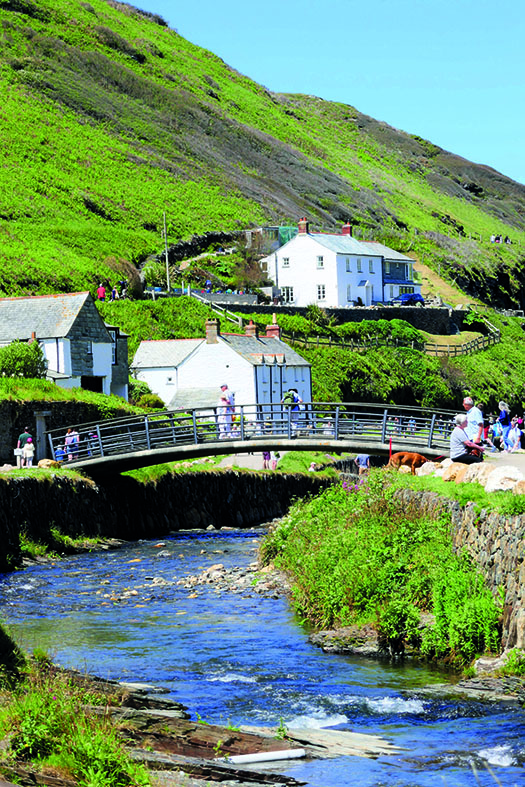
Boscastle is a little town with an appealing harbour, more of that stunning Atlantic coastline, boat trips to nearby islands inhabited by seals and puffins – oh, and a Museum of Witchcraft and Magic.
We chose instead to wander above the harbour and find a spot to sit and enjoy our pasties. We also briefly considered walking to the church of St Juliot, where author Thomas Hardy met his wife, Emma, in 1870. The couple spent many holidays around Boscastle, once managing to get themselves locked into Tintagel Castle and having to attract attention by waving a handkerchief out of the window!
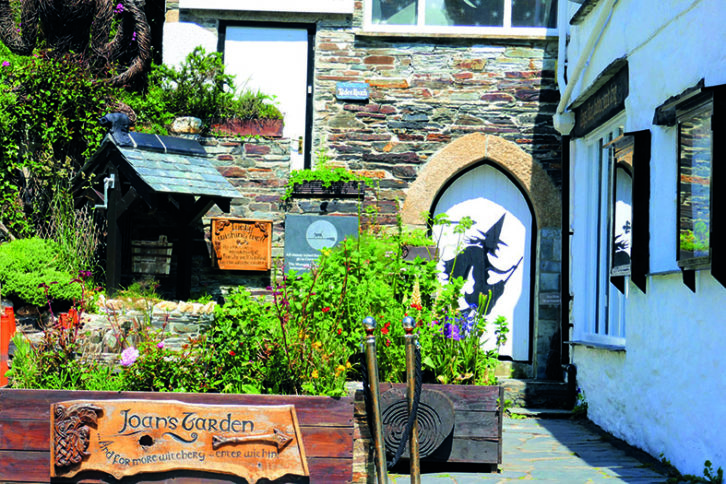
However, we decided time was probably against us if we were to do it justice (there’s the excuse for a return visit we were looking for). Nor did we have time to visit the intriguingly named Cobweb Inn before catching our bus back to Tintagel, keen to sample the clifftop walk and see the legendary castle.
Puffins on the clifftops
Covid-19 restrictions meant tickets to Tintagel Castle itself still needed to be pre-booked at the time of our visit, but it is possible to get close enough for a good view from the opposite cliff if you follow the marked path, skirting the coastline, and to spy out Merlin’s Cave, where the wizard is said to have lived.
With a good pair of binoculars, we also spotted some puffins, flying around the adjacent rocks and perching precariously on the outcrops.
Despite the steep final few steps back up the road, this makes for a good, not too long walk and there is a little café if you fancy refreshments before returning to the centre of town. It was then a short stroll back to our pitch, to freshen up before our taxi took us to Tintagel Brewery for dinner – highly recommended even if you’re not an ale drinker, though if you are, you’ll be spoilt for choice, and they are excellent!
All too soon our taster of the Atlantic Coast was over, leaving a desire to return in quieter times. I can certainly see why so many people head here each year.
Trip Planner
When to go
Cornwall’s Atlantic Coast is enormously popular as a holiday destination, so it’s pretty busy throughout the high season. But there are quieter places, even in summer, so you can vary the pace of your stay.
Find out more
Where we stayed
Wall Park & Centry Road Camping Site
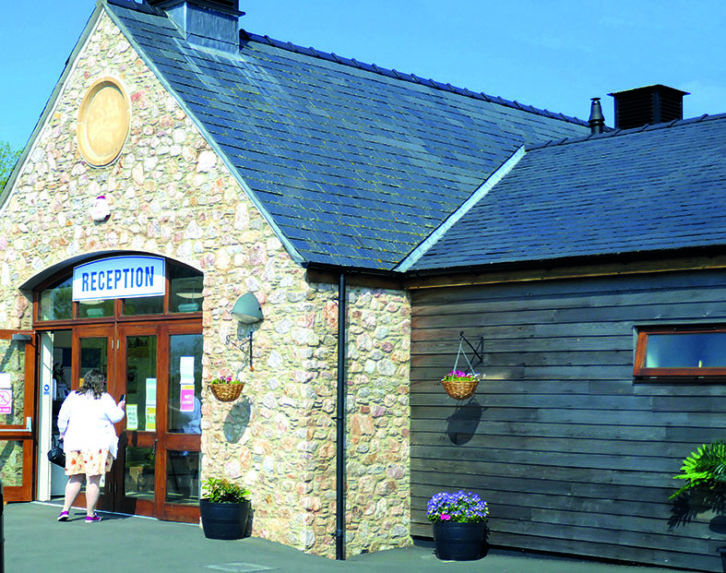
- Centry Road, Brixham, TQ5 9ET
- Web centrytouring.co.uk
- Open All year
- Charges (pitch+2+hook-up) £15-£28; minimum two night stay at weekends
There are 150 grass pitches, on mainly level ground, with two facilities blocks. A coffee van is on site every morning, serving hot drinks and pastries or rolls, and there was also a burger van operating during our stay.
A 15-minute downhill stroll brings you to Brixham and the harbour, but it’s a fairly steep return journey, which might be difficult for the less mobile. Happily, there are usually plenty of taxis around. Also a short stroll away is Berry Head and good clifftop walks.
Polmanter Touring Park
- Hasletown, St Ives, TR26 3LX
- Web www.polmanter.com
- Open April-October
- Charges (pitch+2+hook-up) £19.50-£53; advance bookings must be for at least three nights
This sizeable campsite is family- and dog-friendly, with a shop, bar/restaurant (hosting weekly quiz and music nights), children’s play areas and a swimming pool. There is a choice of pitch types, from basic to fully serviced.
A handy shuttle bus (very reasonably priced) runs regularly from the site into the centre of St Ives, a five-minute drive away.
There is a large arrivals area beside the bus stop at the entrance to the site itself, with plenty of room to park up and manoeuvre if necessary.
Headland Caravan Park
- Atlantic Road, Tintagel, PL34 0DE
- Web www.headlandcaravanpark.co,uk
- Open 18 May – 31 October
- Charges [email protected]
On the edge of Tintagel village, the site has a large grass field with electric hook-up points for tourers, surrounded by fields on three sides and with distant sea views.
The site is under new management; although facilities are currently fairly basic the new managers plan to upgrade while keeping things simple, so no shop or bar. Everything you might need is a few steps away in Tintagel.
If you liked this… READ THESE:
Cornwall – Practical Caravan Travel Guide
St Ives – Practical Caravan Travel Guide
Best caravan manufacturers – the 10 best caravan brands
If you’ve enjoyed reading this article, why not get the latest news, reviews and features delivered direct to your door or inbox every month. Take advantage of our brilliant Practical Caravan magazine SUBSCRIBERS’ OFFER and SIGN UP TO OUR NEWSLETTER for regular weekly updates on all things caravan related.
Just beyond St Ives sits Zennor, a pretty village on the spectacularly beautiful Zennor Head
